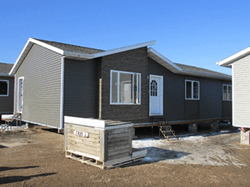March 2018: Welcome to ICOG
Welcome to Iowa Association of Councils of Governments (ICOG) quarterly newsletter! This communication is to keep you up to date with what ICOG has been working on.
ICOG is the state association for 17 councils of government (COGs) in Iowa. Collectively, we work to solve regional issues and improve public sector services to build strong communities throughout the state. COGs are Iowa's rural economic backbone.
Should you have any questions, please do not hesitate to reach out to me. I would be happy to talk to you about any of the projects we are involved in or a project you would like our input on.
Sincerly,
Carl Lingen
Executive Director
staff@iarcog.com
ICOG Continues Work on Rural Housing Initiative
Iowa Association of Councils of Governments (ICOG) continue to work with member councils of governments, Iowa Prison Industries and legislators to start an affordable housing program in Iowa. Modeled after the Governor’s House program in South Dakota, COGs look to be the leader in creating the program here in Iowa that would help create affordable homes in rural areas.
Our work with legislators has gone well as both parties have not only shown great interest but are helping drive this legislation forward. Currently, we are seeking $2 million in one-time funding to help build a security fence at the Newton Correctional Facility, build a structure for storage and for initial operating capitol needed. This program, over time, will be a self-sustaining program for the state of Iowa. When talking with Lt. Governor Gregg about this program, he indicated he had not seen a program that fits in so many buckets. He stated, “This helps with rural housing shortage, workforce shortage, addresses the middle skills gap in Iowa and helps reduce recidivism in the state.”
Mike Norris, SEIRPC, discusses the program in more detail with his article below.



